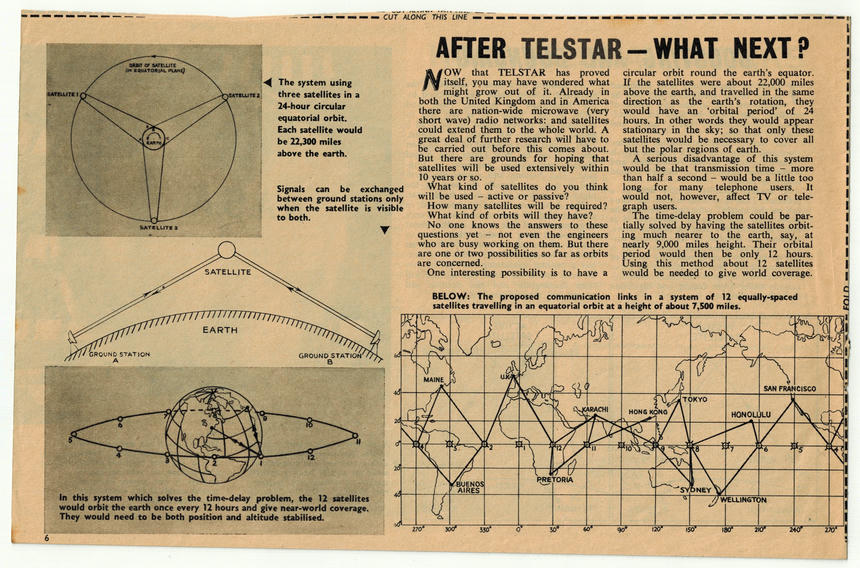Scrapbook 3: The Story of Telstar (6)

AFTER TELSTAR — WHAT NEXT ?
NOW that TELSTAR has proved itself, you may have wondered what might grow out of it. Already in both the United Kingdom and in America there are nation-wide microwave (very short wave) radio networks: and satellites could extend them to the whole world. A great deal of further research will have to be carried out before this comes about. But there are grounds for hoping that satellites will be used extensively within 10 years or so.
What kind of satellites do you think will be used — active or passive?
How many satellites will be required?
What kind of orbits will they have?
No one knows the answers to these questions yet — not even the engineers who are busy working on them. But there are one or two possibilities so far as orbits are concerned.
One interesting possibility is to have a circular orbit round the earth’s equator. If the satellites were about 22,000 miles above the earth, and travelled in the same direction as the earth’s rotation, they would have an ‘orbital period’ of 24 hours. In other words they would appear stationary in the sky; so that only these satellites would be necessary to cover all but the polar regions of earth.
A serious disadvantage of this system would be that transmission time — more than half a second — would be a little too long for many telephone users. It would not, however, affect TV or telegraph users.
The time-delay problem could be partially solved by having the satellites orbiting much nearer to the earth, say, at nearly 9,000 miles height. Their orbital period would then be only 12 hours. Using this method about 12 satellites would be needed to give world coverage.
The system using three satellites in a 24-hour circular equatorial orbit. Each satellite would be 22,300 miles above the earth.
Signals can be exchanged between ground stations only when the satellite is visible to both.
BELOW: The proposed communication links in a system of 12 equally-spaced satellites travelling in an equatorial orbit at a height of about 7,500 miles.
In this system which solves the time-delay problem, the 12 satellites would orbit the earth once every 12 hours and give near-world coverage. They would need to be both position and altitude stabilised.